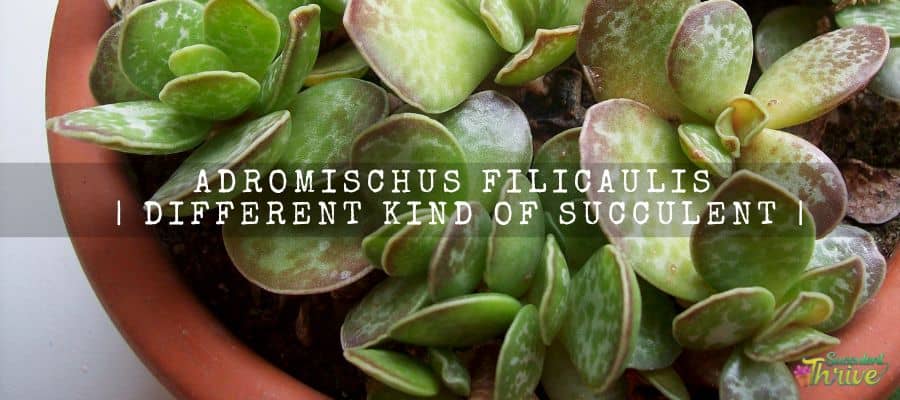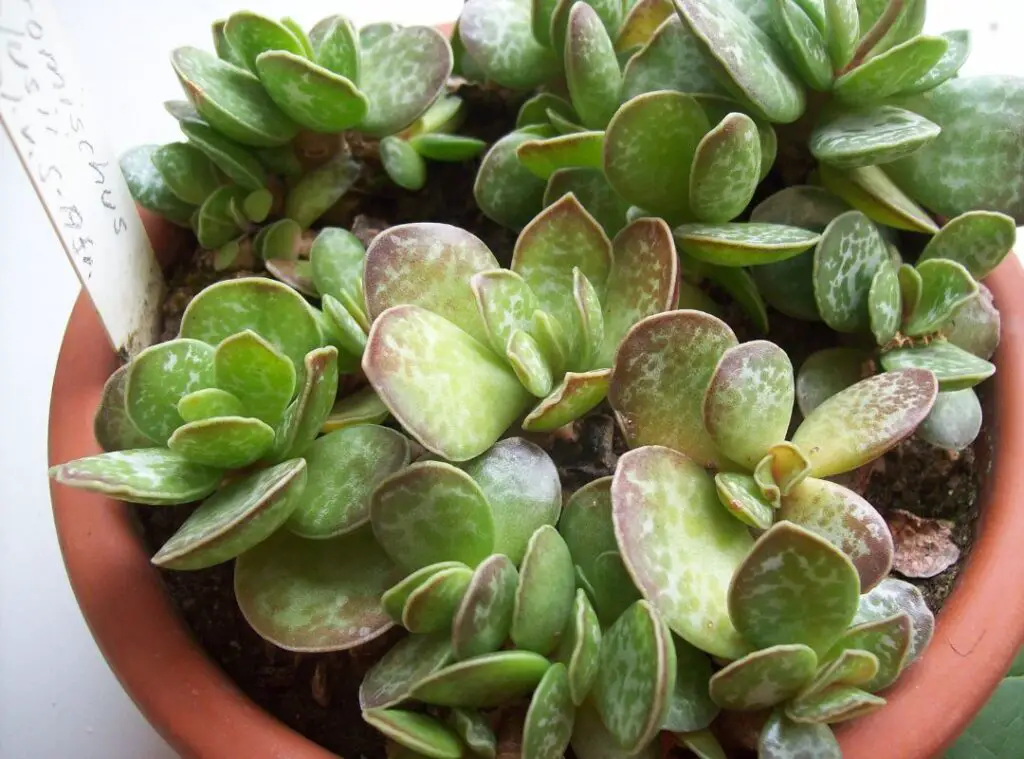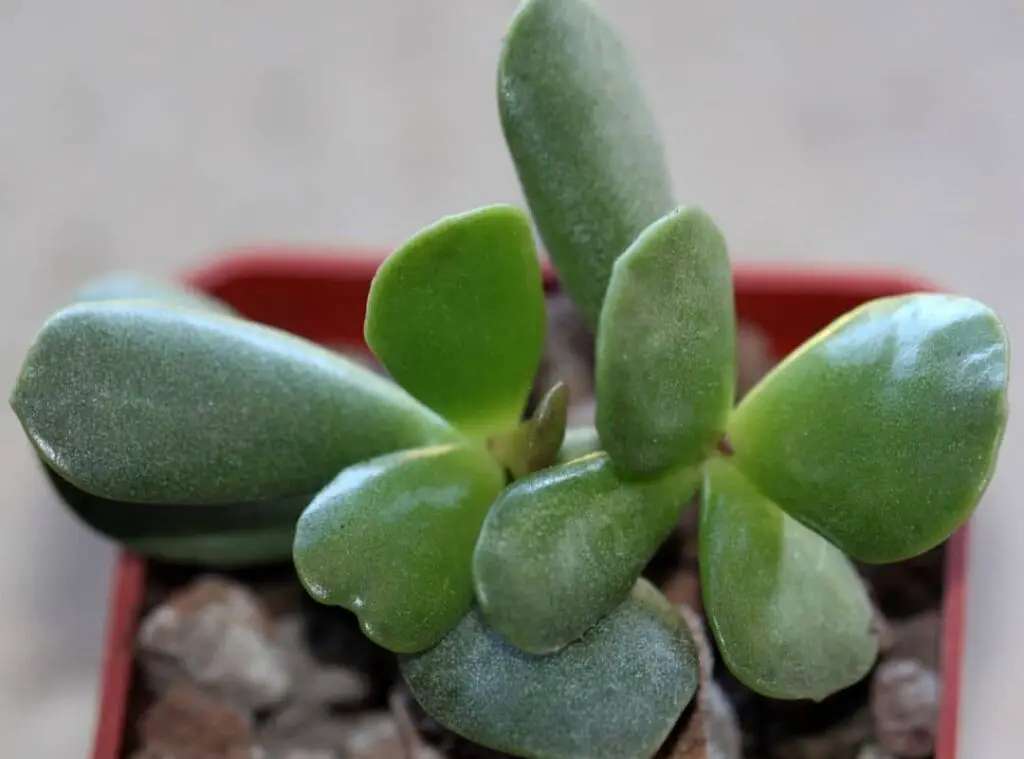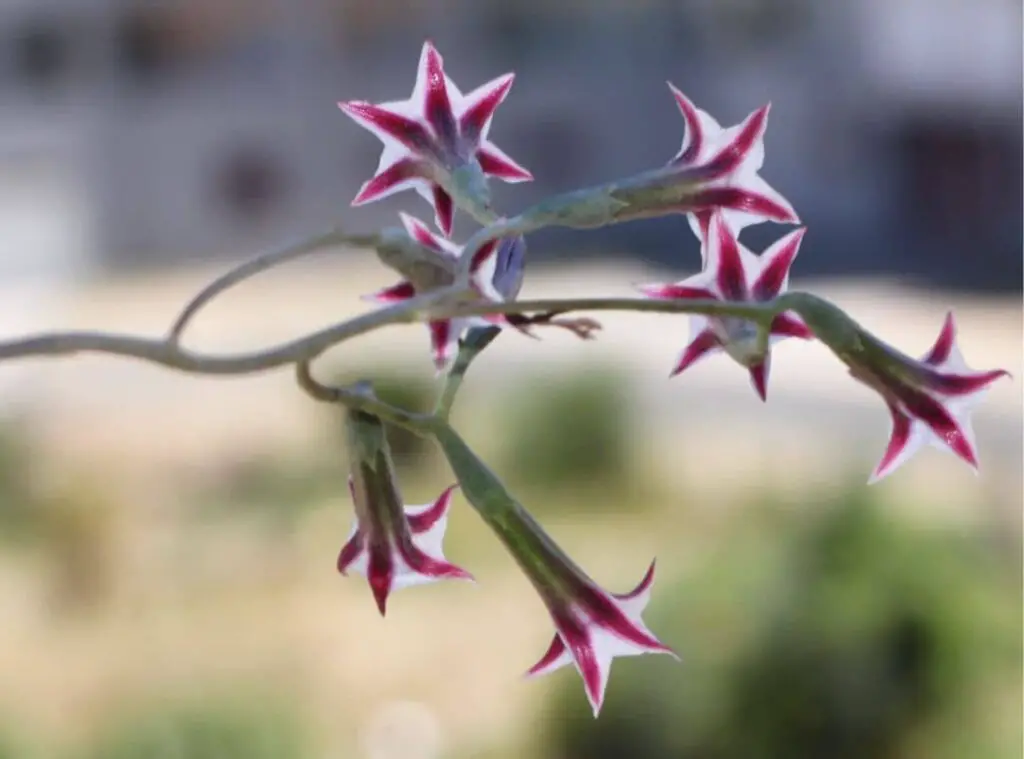South African native Adromischus caryophyllaceus are fabulous sets of succulents. They are owned by the family Crassulaceae and by the genus Adromischus. Adromischus caryophyllaceus goes by the common name called Nentabos. Many succulent lovers are fans of these beautiful plants as they have their own unique beauty and majesty. Above all, looking after these plants is very easy too. These plants make coastal areas and rocky slopes their natural habitats.
Adromischus caryophyllaceus are perennial plants. Furthermore, you could witness them bearing flowers during their flowering season too. So, if you had cultivated them in cute-looking planters, it would be so graceful to look at them. So, let’s start to learn about these adorable beauties, the care tips you need to practice and how to propagate them, etc.

How do I identify Adromischus caryophyllaceus?
If I briefly touch on the Adromischus caryophyllaceus plant sizes, they will get as tall as 35 cm (14 inches) when they fully grow. In addition to that, those leaves would be fleshy. Further, Adromischus caryophyllaceus leaves may further come up with a little spike on their top. The shape of the Adromischus caryophyllaceus leaves would be either spoon-shaped or oblong-shaped.
Those leaves would be prominent in blue-green to greenish-yellow colors. Once you expose the Adromischus caryophyllaceus plants to strong sunlight levels, you could spot them turning their leaves margins into a brownish-red color. The length of the Adromischus caryophyllaceus leaves would be 1.2 inches (3.5cm). Moreover, their width would be 0.8 inches (2cm)
Adromischus caryophyllaceus roots would be fibrous. Besides they would come up with an erect or recumbent stem as well. Adromischus caryophyllaceus plants may produce flowers in bright pink color. Further, those blooms would be tubular shaped and would be about 0.8 inches long. Further, those flowers would consist of purple stripes too. You could spot them flowering in summer.
Size of the plant
Adromischus caryophyllaceus plants may grow up to 35 cm ( 14 inches ) when they grow to their best potential.
Growth rate
Adromischus caryophyllaceus plants are slow-growing plants.
One look care guide
| Botanical Name | Adromischus caryophyllaceus |
| Plant Type | Succulents |
| Mature Size | 35 cm ( 14 inches) in height |
| Sun Exposure | Full sunlight to partial shade |
| Soil Type | Well draining |
| Soil pH | Neutral |
| Bloom Time | spring |
| Flower Color | Bright pink |
| Hardiness Zones | USDA hardiness zones 10a-11b |
| Native Area | South Africa |
How do you take care of the Adromischus caryophyllaceus?
Light Requirement
In terms of correct sunlight requirements, Adromischus caryophyllaceus plants would require full and partial sunlight both depending on the intensity of the sunlight. Ideally, they need to have full sunlight during the morning hours. Besides, they would prefer to have some shade during the scorching hours of the day. Adromischus caryophyllaceus plants would not grow vigorously if you keep growing them in low lights for too long. Ideally, it has to be five to six hours of full sunlight and partial sunlight during the rest of the day.
If you cultivate them indoors, I suggest you keep the plants closer to a bright sunny windowsill. If you think the plants are still running short of adequate light, you may make use of grow lights to supplement light. Needless to mention that if you have grown them indoors for too long and wish to bring them indoors you need to accustom the plants to sunlight without exposing them to full sunlight at once.

Temperature and humidity
Adromischus caryophyllaceus plants are originally from South Africa which literally means they would want warmer temperatures to perform well. Furthermore, these plants are not tolerant of colder temperatures. The minimum temperature these plants can tolerate would be 5 degrees Celsius, but not for too long. The best is to bring the plants indoors when the winter conditions get tough.
is it cold hardy?
Adromischus caryophyllaceus plants are not cold hardy plants.
Hardiness Zone
Adromischus caryophyllaceus plants are hardy in USDA hardiness zones 10a-11b 30 degrees Fahrenheit ( -1.1 degrees Celsius) to 50 degrees Fahrenheit ( 10 degrees Celsius).
Watering Requirement
Adromischus caryophyllaceus plants would survive well with minimal water just like the fellow succulents. Succulents are well renowned for their ability to store water and Adromischus caryophyllaceus plants are no different from them.
On another note, you need to water them thoroughly and somewhat frequently when they are in their active growing phase. So, you can be aggressive in watering these plants from spring to fall. However, you need to still let their soil wither between two watering sessions. Furthermore, you need to cut back on watering and try to keep them dry during winter. Excess watering could be the biggest culprit which could cause numerous diseases. For example, it would contribute to root rot which would turn out to be fatal to the plants sometimes.
Soil Requirement Type / pH
A free draining gritty soil mix would be a great fit for these plants to grow firmly. Do not use any substrate which has a poor draining facility as it would create sogginess and dampness in the growth medium which would be unhealthy for the plants. What I could suggest you do is simply purchase a succulent or cactus soil mix to grow them. Additionally, you can make an excellent draining soil mix on your own. You can be tactful in using elements as pumice as they would increase the draining facility of the soil mixes.

Pot size Potting and Repotting’
Adromischus caryophyllaceus plants would prefer to be repotted once every two years. These are not rapid-growing plants, so it would be best to repot them once every other year only. That said, if you had freshly purchased the Adromischus caryophyllaceus plants from a nursery you can consider repotting the plants as chances are that they would have been grown in a contaminated substrate.
When transplanting them you need to first gently take the plants out of their pots gently and remove whatever decaying blackened plant parts you may find. Next, treat those cuttings with a proper fungicide and transplant them into a fresh soil mix. The best pot material to use would be either a terracotta pot or a clay pot.
Where to Plant
Adromischus caryophyllaceus plants are heavily dependent on strong sunlight, so irrespective of the place you grow them you need to ensure that they can gain adequate sunlight. You can grow these plants either indoors or outdoors if you can fulfill their sunlight requirement. . If you live in USDA hardiness zones 10a-11b you can grow them outdoors. On the other hand, if you live in an area where the temperature would be much colder, a spot in your house would be ideal.
Fertilizer and time of year
Fertilizing-wise, you can go ahead with commercially made succulent or cactus fertilizers which you can easily purchase from your closet garden store. With that being said, you should suspend feeding the plants when they are dormant.
Flower
Adromischus caryophyllaceus plants blossom with flowers in pink. Besides they would tend to take a tubular shape as well. They would bear flowers during spring. The petals of the booms would develop purple stripes too.

Dormancy
Adromischus caryophyllaceus plants would go dormant in winter.
Common bugs and illnesses
Adromischus caryophyllaceus plants may suffer from root rot if you exposed them to waterlogged conditions. Root rot would be lethal to the plants once its spread to a severe level. Furthermore, if there are soggy damp conditions in the potting medium, it would make the plants prone to other bacterial and fungal infections too.
Besides, domestic pests such as mealybugs may also create problems for the Adromischus caryophyllaceus plants. In addition to that, weevils may also tend to attack these plants on and off too. You can remedy them with appropriate fungicides.
Adromischus caryophyllaceus benefits
Adromischus caryophyllaceus plants would be excellent choices to grow in greenhouses as well as in containers.
How to propagate adromischus caryophyllaceus?
You can propagate the Adromischus caryophyllaceus plants by using their leaves, cuttings and offsets too. If you are using the lead propagation method, you need to first choose a healthy-looking leaf that has no stem part remaining in it. Next, leave them in a warmer spot which can help them to become calloused. After that, you should plant them in a fast-draining soil mix. Finally, you need to water them whenever their soil is dry.
You may use their leaf cuttings to propagate them too. To obtain the cuttings, you need to make use of sharp tools such as a pair of scissors or a knife and then snip them off from the mother plant. Ensure that these tools are all sterile too as unless it would result in an infection of the plants. Once you obtain the cuttings you need to allow them to develop callous. After that, you could grow them in a fast-draining soil mix. Ensure that you keep the soil mix moistened all the time.
If you wish to go ahead with the offset method, you could simply separate the offsets from the mother plant and grow them in a fast-draining soil mix.
Conclusion
Before concluding this, I hope you are now all set to cultivate these adorable plants. further, I trust that this article helped you to educate yourself on how to grow them well too. Adromischus caryophyllaceus plants are such precious plants that would add so much grace and a sense of freshness to wherever you grow them. So, try growing them as it would be so much fun growing them.
Credit to: AzFlora ENG
Read Next : Adromischus Filicaulis | Different Kind Of Succulent |
